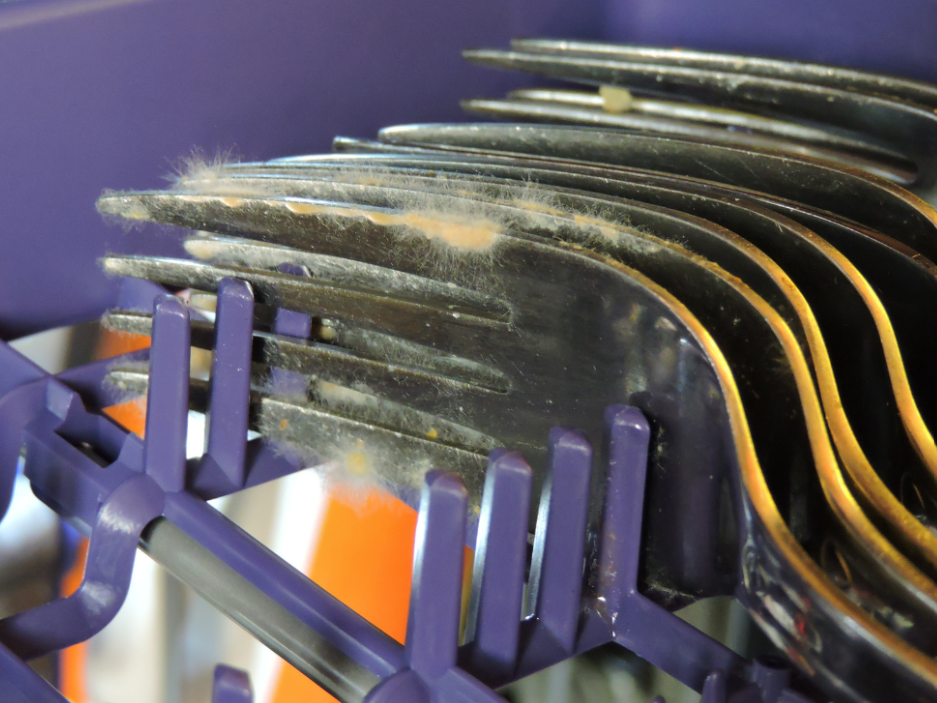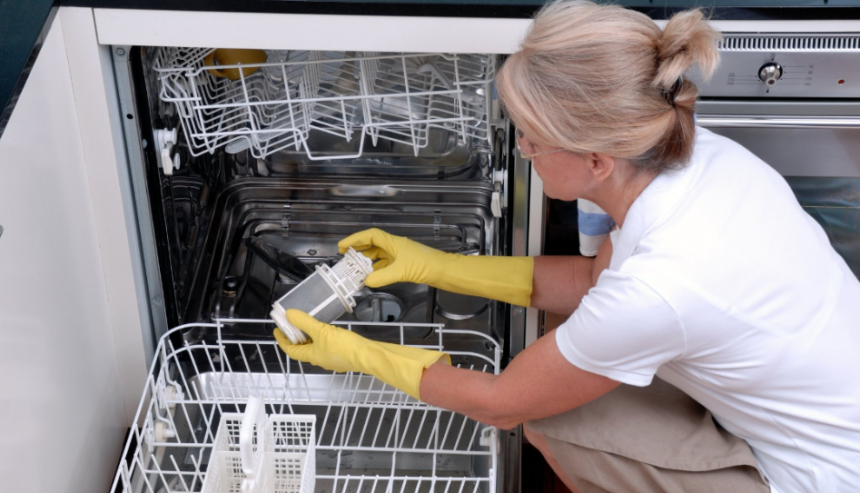Getting Rid of Mold in Dishwasher
Is your dishwasher starting to show signs of dirtiness? Are there unpleasant odors wafting from it? It’s time to inspect both the exterior and interior, and if possible, carefully examine the bottom of the dishwasher. You might discover the presence of mold, which not only creates an unpleasant environment but can also pose health risks. While household dishwashers are undeniably convenient, they do require regular maintenance.
Mold thrives in moist environments, making areas with poor air circulation and excess moisture ideal breeding grounds. Moreover, any leftover food particles in the dishwasher can serve as a food source for mold growth. This article will outline steps you can take to identify and eliminate mold in your dishwasher, helping to maintain a clean and hygienic kitchen.
How to Identify Mold in Dishwasher
Identifying mold in your dishwasher is crucial for maintaining a clean and hygienic kitchen environment. Here are some steps to help you recognize mold growth in your dishwasher:
Visual Inspection: Start by visually inspecting the interior of your dishwasher. Look for any signs of mold growth, which may appear as black, green, or brown spots or patches on surfaces such as the walls, door seal, racks, and bottom of the dishwasher.
Musty Odor: Mold often emits a musty or unpleasant odor. If you notice a persistent unpleasant smell emanating from your dishwasher, it could be a sign of mold growth.
Allergic Reactions: Some individuals may experience allergic reactions such as sneezing, coughing, or skin irritation when exposed to mold spores. If you or your family members experience such symptoms after using dishes or utensils cleaned in the dishwasher, it could indicate the presence of mold.
Excess Moisture: Mold thrives in moist environments. Check for any signs of excess moisture or water leakage inside the dishwasher, as these conditions provide an ideal breeding ground for mold.
Residue Build-up: Mold may appear as a slimy or fuzzy residue on surfaces inside the dishwasher. Pay close attention to areas where water tends to accumulate, such as around the door seal, drain, and filter.
Inspect Seals and Gaskets: Mold often grows in hidden areas such as seals and gaskets. Check these components thoroughly for any signs of mold growth or discoloration.
Regular Maintenance: Conduct regular inspections and cleaning of your dishwasher to prevent mold growth. Remove food debris, clean filters, and ensure proper drainage to minimize the risk of mold proliferation.

How to Prevent Growth of Mold in Dishwasher
Regular Cleaning: Clean your dishwasher regularly to remove food debris, grease, and other organic matter that can promote mold growth. Pay attention to hard-to-reach areas such as seals, gaskets, and the drain.
Use Hot Water: Run the dishwasher on the hottest water setting to help kill bacteria and mold spores.
Allow Proper Ventilation: After each use, leave the dishwasher door slightly ajar to allow moisture to escape and prevent the buildup of humidity inside the dishwasher.
Remove Wet Items Promptly: Remove wet items such as sponges, dishcloths, and kitchen towels from the dishwasher promptly to prevent excess moisture from accumulating inside.
Inspect and Repair Leaks: Regularly check for any leaks or water damage in the dishwasher and repair them promptly to prevent the growth of mold and mildew.
By following these steps, you can effectively disinfect your dishwasher and prevent the growth of mold, ensuring that your dishes are cleaned safely and hygienically.
How Can You Get Rid of Mold in Your Dishwasher
When dealing with mold, it’s crucial to prioritize safety measures. If the affected area exceeds ten square feet, it’s advisable to seek assistance from trained professionals, like PuroClean Emergency Recovery Services New Jersey, rather than attempting remediation yourself. Call Our professional mold remediation experts on (877) 750-7876.
For smaller areas under ten square feet, proceed with caution, ensuring you wear appropriate personal protective equipment (PPE), including gloves, goggles or eye protection, and N-95 respirators.
While complete eradication of mold from a home is unfeasible due to the ubiquitous presence of mold spores, there are steps you can take to address the issue. It’s prudent to enlist the expertise of a professional mold remediation company like PuroClean, equipped with trained specialists to handle such situations effectively.
If you opt to tackle a small mold-infested area on your own, adhere to safety protocols by wearing PPE and carefully following instructions. It’s essential to recognize that these are DIY approaches and may differ from the procedures employed by PuroClean specialists for more severe mold problems.
To begin, remove removable parts such as baskets and trays, then run the dishwasher on the hottest setting without dishes for a complete wash cycle. Allowing items to soak for about an hour is beneficial. Employ elbow grease to scrub visible mold using a sturdy sponge, scrub brush, or old toothbrush, paying attention to areas where water accumulates, as these are prime spots for mold growth.
Once mold is removed, wipe the interior of the dishwasher with a clean, damp cloth and allow it to dry. Proceed to clean the drain opening and door seal by removing debris from both components. After ensuring all components are thoroughly dry, reinstall racks, rotor, and drain strainer if applicable. Finally, disinfect the dishwasher to complete the remediation process.
How to Disinfect Your Dishwasher
To disinfect your dishwasher and prevent the growth of mold, follow these steps:
Empty the Dishwasher: Start by removing any dishes, utensils, and racks from the dishwasher.
Inspect and Clean Filters: Check the dishwasher filters for any debris or food particles, and clean them thoroughly. This helps improve drainage and prevents mold growth.
Run Hot Water Cycle: Run a hot water cycle in the dishwasher without any dishes. The hot water helps to kill bacteria and mold spores present inside the dishwasher.
Use Vinegar or Bleach: Add a cup of white vinegar or bleach to the bottom of the dishwasher and run another hot water cycle. Both vinegar and bleach are effective disinfectants that can kill mold and bacteria.
Clean Interior Surfaces: Once the cycle is complete, use a damp cloth or sponge to wipe down the interior surfaces of the dishwasher, including the walls, door seal, and bottom. Pay special attention to areas where mold is likely to grow, such as around the door seal and along the edges.
Clean Removable Parts: Remove any removable parts such as racks, trays, and utensil holders, and wash them with warm, soapy water. Make sure to thoroughly dry them before putting them back in the dishwasher.
Ventilate: After cleaning, leave the dishwasher door open for a while to allow air circulation and help dry out any remaining moisture.
Is black mold common in dishwashers?
Black mold, also known as Stachybotrys chartarum, is not particularly common in dishwashers compared to other types of mold. However, any mold growth in a dishwasher can pose health risks and should be addressed promptly.
Is it safe to use a dishwasher with mold?
Using a dishwasher with mold is not safe, as it can lead to the spread of mold spores onto dishes and utensils, potentially causing health issues. Mold can contaminate dishes and utensils, leading to respiratory problems, allergic reactions, and other health concerns, especially for individuals with asthma, allergies, or compromised immune systems.
Can moldy dishes make you sick?
Moldy dishes can indeed make you sick if not properly cleaned and sanitized. Ingesting food or beverages from moldy dishes can lead to food poisoning, gastrointestinal issues, allergic reactions, and respiratory problems. It’s essential to thoroughly clean and disinfect dishes, utensils, and the dishwasher itself to prevent the spread of mold and ensure the safety of your kitchen and food preparation areas.



